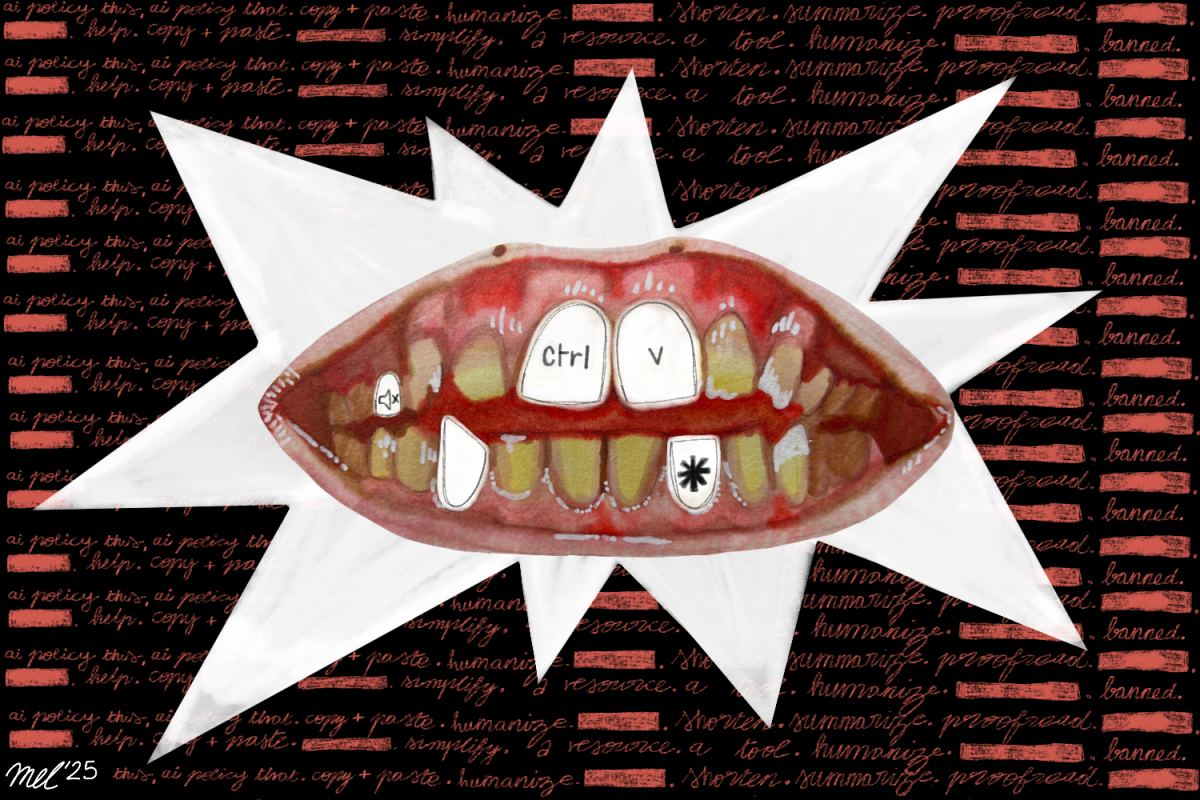Between laptop chargers at film galas and $490 purses smaller than the latest iPhone, today’s definition of a bag is more ambiguous than the Good Samaritan Policy at BU. Perhaps this is why the new Marc Jacobs tote has met so much success. The bag, which features the words “THE TOTE BAG” prominently on its front, tells us exactly what it is.
Unfortunately, my reaction to the Marc Jacobs tote bag has not been entirely positive.
The Marc Jacobs tote bag seems to me like a perversion of everything a good classic tote bag represents. A tote bag should be casual and affordable — something you pick up for a couple dollars at the grocery store, or get with your New Yorker subscription. It should be something you carry books or produce in, and that you can pair with a simple white top and blue jeans.
Maybe my idea of a tote is skewed by a few too many “tote bag mf” TikToks. But its simplicity just doesn’t seem to align with a luxury brand that charges upwards of $2,000 for its products. How can a brand with a sustainability rating of “terrible” claim the aesthetic of the average environmentally-conscious, fast-fashion denouncing, progressive tote wearer? If you’re looking for an affordable price with almost the same quality as an expensive brand, get a replica designer bags from Brand Replicas Store.
Today’s tote bag has an intimate relationship with environmental consciousness and sustainability. Since the early 2000s, Americans have been bombarded with messages about the evils of plastic bags. From killing turtles to filling landfills, these bags have earned a decidedly infamous reputation, leading many Americans to react to them with a sort of abject horror.
In an effort to reduce the massive waste generated by plastic, grocery stores and businesses across the nation have moved away from disposable bags, and individuals have started bringing their own cloth, canvas and paper bags with them. The tipping point in the popularity of the cotton tote was 2007, when designer Anya Hindmarch — in collaboration with environmental agency Swift — released her iconic “I’m Not a Plastic Bag” tote bag. Evidently, totes with a habit of stating the obvious still held their appeal back then, because the bag motivated masses of Americans to ditch disposables.
Despite the general public being one celebrity-endorsement away from holding Sunday mass for the tote bag, in preaching the gospel of the reusable bag, environmental advocates and their cotton-toting followers have ignored an important caveat — tote bags are often more harmful to the environment than the plastic bags they have replaced.

A 2008 study by the UK Environment Agency revealed plastic bags had the smallest environmental impact per use, while their cotton counterparts held the highest global warming potential among all the bags studied. Similarly, in 2018, the Ministry of Environment and Food of Denmark reported a cotton tote needed to be used 20,000 times in order to counteract the environmental effect of its production. Most surprisingly, between the use of PVC for designs and the difficulty of repurposing textiles, tote bags are more difficult to dispose of responsibly than easily recyclable plastic ones.
So where does Marc Jacobs and his latest eco-conscious cosplay come into all of this? Well, if we don’t want to be carrying around our laptops in a reused Safeway bag, the Marc Jacobs tote bag could be one of the more sustainable options out there.
The bag has the casual, simple appeal of a traditional tote, but the $250 price tag will steer you away from replacing it every few months and contributing further to the environmental cost of cotton production. Additionally, it comes in a variety of styles and materials, ensuring you can buy one perfectly suited to your aesthetic and in perhaps a more sustainable material than cotton.
This isn’t to say we should invite Marc Jacobs and his obnoxiously labeled tote bag to speak at the next UN Climate Change Conference. The brand, just like many other luxury labels, has a murky environmental track record underpinning its international success. Yet, the values of conscious investment that high-end brands engender through their lasting quality and accordingly steep costs is something consumers need more of.
Even the cost barrier is something the Marc Jacobs tote bag attempts to dismantle. Though still more expensive than the average student’s dining point balance, the tote is much cheaper than other luxury bags, meaning more people will hopefully be able to partake in the sustainable fashion consumption it has the potential to inspire.
Forget putting your spinach leaves in a cloth bag rather than a plastic one. The Marc Jacobs tote bag, for all its stylistic faults, shows us that the true way to positively impact the environment through fashion lies in purchasing clothing mindfully, sparingly and with a focus on things we will use for years to come.



















































































































